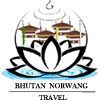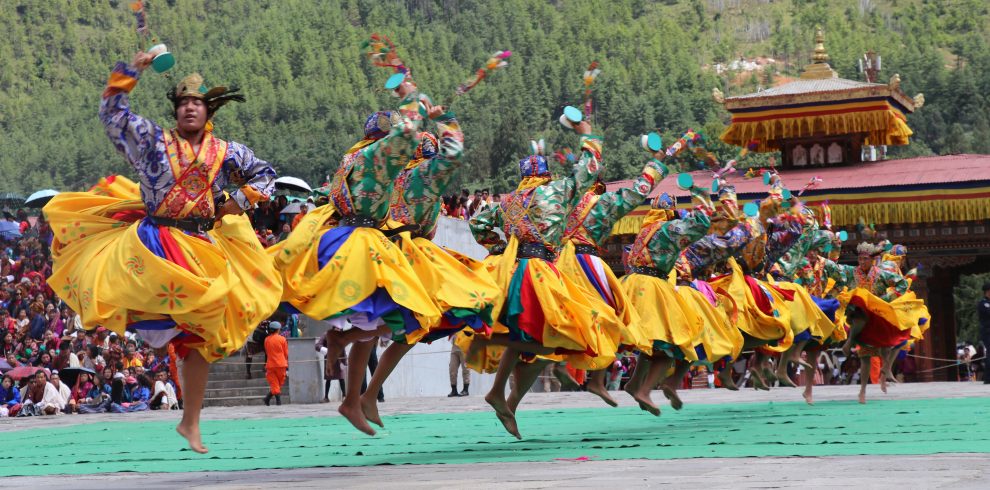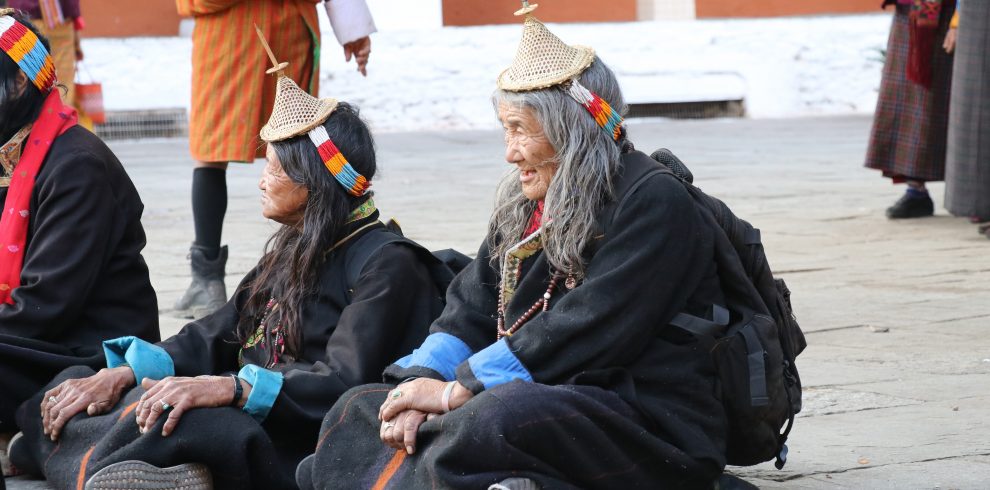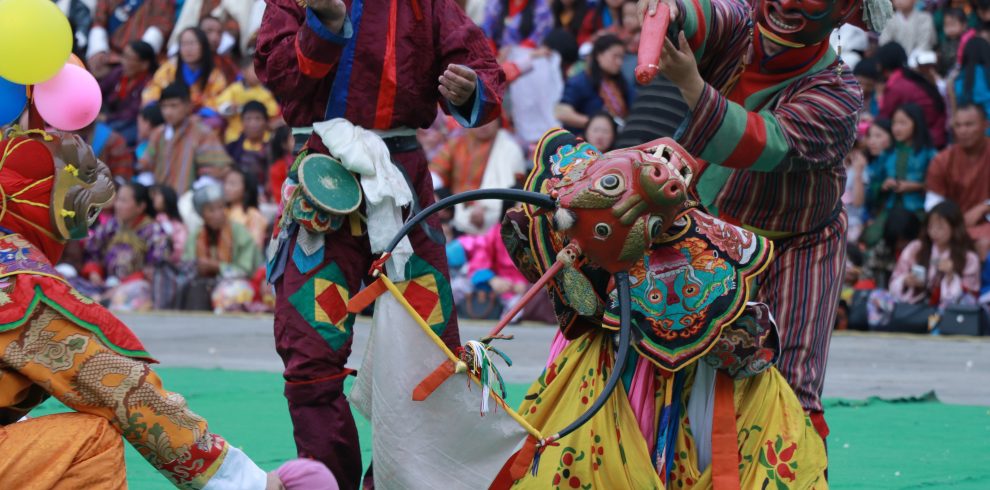Contact us for detailed itinerary for this tour
Day 1 :
Festival Day 1
<p>Dance of the Lord of Death and his Consort (Shinje Yabyum)</p><p>Costume: Brocade long dress, buffalo mask.</p><p>Dance of the Black Hats (Shana)</p><p>Costume: Large black hat, felt boots, colorful brocade long dress, no mask.</p><p></p><p>The black hat dancers assume the appearance of yogis who have the power to destroy and create life. They protect the good and destroy the evil. The Black Hat dancers perform the ritual firstly by building a tantric mandala and then cutting the demons into pieces. Thus they take possession of the earth in order to further protect it, and they dance the thunderbolt step to impress their power on it.</p><p></p><p>Dance of the Black Hats with Drums (Shana Ngacham)</p><p></p><p>When the black hats dancers have destroyed the malevolent enemies of the Doctrine, they beat the great drums of Buddhism. The sound of the drums represents the religion, which cannot be represented in any other way because it has no visible form.</p><p></p><p>Dance of the Four Stags (Shacham)</p><p>Costume: Knee length skirts, deer masks.</p><p></p><p>When Ugyen Rimpoche subdued the King of the Wind (also the Lord of the North/West Direction) who was creating misery in this world, he rode the stag (the mount of the Lord of the Wind) and established peace and happiness. As a blessing, the first of the incarnations of Nam Nying (Namkhe Nyingpo), who was the Guru’s disciple, found the effigy of the face of a stag and so the dance of the White stag came into being. During this dance, the gratitude of the pious people is demonstrated to all the beings destined to be converted in the future. After all the agitations of the world have been overcome, happiness and peace will reign supreme.</p><p></p><p>Dance of the Three Kinds of Ging (Peling Ging Sum)</p><p></p><p>Costume: The Ging wear knee length skirts. For the dance with the sticks they wear animal masks. And for the dance with the drums and for the dance with the swords they wear colorful terrifying masks.</p><p></p><p>The demon Nyulema wears a human yellow mask and appears with the atsaras (clowns) before the dance. The origin of the happiness of all beings in the three worlds is the religion of the Buddha. To propagate this religion in the world, one must listen to the teaching and then practice thinking and meditating. Any kinds of demons who create obstacles are called Jyungpo Nyulema. There are many means by way of magical formulas to subdue these malevolent beings. The great “treasure discoverer” Pemalingpa saw the three kinds of “Ging”, who are emanations of Ugyen Rimpoche. This was the blessing received which explained how to subdue the Nyulema by magic.</p><p></p><p>Although the Nyulema fled anywhere in the Three Worlds, the Ging with sticks can find them thanks to their foreknowledge. They catch them with the hook of compassion, beat them with the stick of wisdom and tie them with the noose of compassion. The Ging with the swords purify the atmosphere from bad deeds such as killing, robbery or the separation of oneself from one’s tutelary deity (Yidam), caused by the Nyulemas. The Ging with the swords send minds to the paradise of pure consciousness, while they use as sacrificial offerings their body of flesh and blood. After these Demons have been vanquished, the Ging with the drums dance with happiness. They beat the drums of the religion, which is thus propagated.</p><p></p><p>Accompaniment Dance (Kyecham)</p><p></p><p>Costume: Knee length yellow skirt, bare feet, and animal mask with sword in the right hand.</p><p></p><p>Dance of the Noblemen and the Ladies (Pholey Moley)</p><p></p><p>Once upon a time in a Kingdom called Nadem in the north of India, there was a King called Norzang who had five hundred queens. One day the son of a hunter received a favor for saving the life of a serpent deity: he could borrow from this deity the noose that could catch anything. With it he caught the daughter of King Driza, called Yodrongma, who was blessed with incomparable beauty and offered her to King Norzang. He became so passionately attached to her that the rest of the queens felt ignored, so they plotted with Hari, the scarificator, to kill her. Hari caused King Norzang’s father to have a dream prophesizing that if the enemies in the North were not vanquished immediately, the Kingdom would not survive. Obeying this command King Norzang was forced to leave his beloved queen, for he was not able to take a lady with him to war. After a tearful farewell she gave him her ring, the white silk covering her head and other souvenirs. He then left for the North and conquered the enemies. When he returned victorious to his country after many battles, he was full of remorse to find that his Yudrongma had fled to her father’s due to the cunning evil schemes formed by the other queens. After many obstacles on the lovers’ path, they are finally united to live happily ever after.</p><p></p><p>Accompaniment Dance (Kyecham)</p><p></p><p>Dance of the Stag and the Hounds (Shawa Shachi) – 1st Part.</p><p></p><p>Long ago, Jetsun Milarepa (1040-1123) was deeply meditating in a hermitage called Nyichangkurta on the border between Nepal and Tibet, when he heard a dog barking and a man shouting. He went outside and saw a red haired stag sweating and trembling with fear. The compassionate Milarepa soothed the stag by singing a religious song, which then forgot all his fear and sat down to the right of Milarepa. Following fast behind, a red dog arrived full of fiery wrath and Milarepa too calmed the temper and allayed the passion of the dog, who then lay down on the left of the great saint. Then the hunter, called Gonpo Dorji came close behind. He was a fierce and strong man carrying a bow and arrows. When he saw the stag and the dog all sitting peacefully by the great saint, he wondered if Milarepa had cast a spell on them, and in his rage he shot poisonous arrows at him. But Gonpo Dorji’s arrow bow broke into pieces, the string of the bow got cut and the arrow turned against him. Gonpo Dorji was full of incredulity and Milarepa told him, “Gonpo Dorji, your arrow is returned, now listen to my song”. As Milarepa was singing, Gonpo Dorji felt remorse for all his actions and confessed all his bad deeds. He promised to take an oath not to sin again and he practiced the religion and gained full realization.</p><p></p><p>This dance is generally performed like a play in two parts. The first part takes place the first day while the second part is on the second day of the Tsechu. Usually two dogs are portrayed instead of only one. The first part is comical: the hunter’s servant enters and jokes with the clowns. Then comes the hunter crowned with leaves and carrying a bow and arrows, accompanied by his two dogs, dancers wearing knee-length yellow skirts and dog masks. The servants joke very disrespectfully with their master who is preparing to perform a good luck ritual for his hunt. The priest called to perform the ritual does it in ways contrary to the Buddhist tradition, while the atsaras and the servants to go on with their jokes. The second part has a more serious and religious tone. Milarepa appears, wearing a long white dress, a tall red hat and holding a pilgrim’s staff. He sings with a soft voice and has his right hand near his ear. The two dogs, the stag and the hunter arrive in Milarepa’s presence and he converts them with his song. A rope that the dogs and the hunter have to jump over symbolizes the conversion.</p>
Day 2 :
Festival Day 2
<p>Dance of the Lords of the Cremation Grounds (Durdag)</p><p></p><p>Costume: White short skirt, White Boots, White Skull Masks.</p><p></p><p>On the external edges of the Mandala, where the assembly of the secret Tantric deities are residing, there are eight large cremation grounds. Living in the cremation grounds are numerous protectors of the religion (Chokkyong) who are bound by an oath, and among them are the Lords of the Cremation Grounds who protects these areas. Because of a promise they had accepted before, and from which they cannot be diverted even for an instant, these Lords render powerless the assembly of demonic enemies who have violated their oath of not harming the Doctrine. They offer them to the Gods of the Mandala and they reduce them to a mere name. They also help to develop a monk body that follows the doctrine, including teaching and meditation. They show all the beings that revere the doctrine how to perform actions leading to a good rebirth.</p><p></p><p>Dance of the Terrifying Deities (Tungam)</p><p></p><p>Costume: Beautiful brocade dresses, boots and terrifying masks.</p><p></p><p>This very spectacular and dramatic dance has a very deep symbolic meaning. A sacrificial murder is performed. First the dancers representing the Gods try to enclose the evil spirits in a magic circle and then hold them in a box. Then the leader of the Gods uses the sacred dagger, the Phurbu, killing them and delivering them into salvation. He thus saves the world from them. The men and the asuras (demi-gods), who became the enemies of Buddhism and who are impossible to be converted by peaceful means, are converted by Ugyen Rimpoche, who takes the form of Dorji Dragpo “Fierce Thunderbolt”. By slaying these enemies he liberates them into a superior sphere of bliss. By performing such an incredible feat, resulting in the happiness of the human world, he thus helps increase faith in non-illusionary acts.</p><p></p><p>Dance of the Raksha from Dole Monastery (Dole Raksha Cham)</p><p></p><p>Costume: The Raksha has a black mask with horns and yellow skirts.</p><p></p><p>The 4th Temporal ruler of Bhutan, Tenzin Rabgye (1680-1695), wished to do good to his subjects of Shar and Wang. He ordered a bridge to be built on the Wangdi River by a mason named Dragpa from the Village of Rinchengang. In 1685, this builder, along with the people of Shar and Wang, began the construction of the bridge. But what the people built during the daytime the demons undid at night. As the bridge could not be completed the people were left in a fix. The 2nd Je Khempo, Seunam Oezer (1672-1689), who was at that time residing in the Wangdiphodrang Dzong, dreamt of a black man who told him that to overcome the obstacles created by the demons a new dance which had never been performed before had to be created. When everyone came to see the dance, the demons too would be attracted to come and watch, and then when the demons had their attention on the dance, the middle pillar of the bridge must be established and the consecration performed immediately. In this way the demons would not be able to harm the structure.</p><p></p><p>The Je Khempo remembered that during the construction of the Wangdiphodrang Dzong, there had been a prophecy given by Yeshey Gonpo to the Shabdrung. The Je Khenpo realized that this was also a prophecy from Yeshey Gonpo. He immediately sent for the dancers, masks and costumes from the monastery of Dole. The festival began, many people came and among them was the water deity of the Wangdi bridge and his retinue of demons. As their attention was turned away from the river, the pillar was built in the river and the consecration performed at once. While at the Dzong all the other dances were finished, the Raksha dancer alone went on performing a number of dances such as the Bja Cham, Teucham, Gyucham, Kansi and Gosi, until the work on the bridge was completed. As soon as the bridge was completed the dancer disappeared without a trace. By the time everything was over, the demons realized that it was too late and they were powerless. For the happiness of the Bhutanese people, and in order to prevent any other harm, a mandala dedicated to the Buddha Mitrupa (Akshobya) was placed in the middle of the bridge.</p><p></p><p>Dance of the Judgment of Dead (Raksha Marchm)</p><p></p><p>Costume: The Raksha has a black mask and a yellow skirt</p><p></p><p>Dance of the Drum Beaters (Dramitse Ngacham)</p><p></p><p>Costume: Knee length yellow skirts, animal masks, big drums and drumsticks.</p><p></p><p>Dance of the Stag and the Hounds (Shawa Shachi) – 2nd Part</p>
Day 3 :
Festival Day 3
<p>Dance of the Heroes (Pacham)</p><p></p><p>Costume: Knee length yellow skirts and golden crowns (rina), no mask. They are holding a small bell (drilbu) and a small drum (Damaru).</p><p></p><p>The great “Treasure Discoverer” Pemalingpa arrived at the Zangdopelri, a marvelous palace of lotus beams which reflected his infinite wisdom as large and deep as the sky. There he arrived in the presence of Ugyen Rimpoche, the Lord who leads the beings of the Three Worlds, sitting with his disciples in the center of a limitless mandala made of lines of rainbow beams. Within the mandala, the assembly of sages, tutelary deities, heroes (pawos) and heroines (Khandoms pamo) were dancing in the form of the various emanations of the peaceful and terrifying deities. All sorts of dances were performed and every kind of harmonious melody was sung, with the sounds of the religion of the Great Path (Northern branch of Buddhism). Among this congregation, the assembly of the heroes and the heroines is the most important. They are as numerous as the moving clouds and their function is to lead the souls of the beings who follow the true faith into the presence of Ugyen Rimpoche, where eternal happiness is attained.</p><p></p><p>Dance of the Lord of the Cremation Grounds (Durdag)</p><p></p><p>Dance of the Tsholing and the Ging (Ging Tsholing)</p><p></p><p>Costume: The Tsoling have long colorful dresses and wear terrifying masks. The Ging wear orange skirts, terrifying black masks with a flag on top and hold a big drumstick.</p><p></p><p>Dance of the Eight Manifestations of Guru Rimpoche (Guru Tshen Gye)</p><p></p><p>Ugyen Rimpoche is the second Buddha and the incarnation of Avalokiteshvara (Thuje Chenpo), Lord of Compassion. When Buddha was about to Enter Nirvana he told his disciples, “Do not be sad, I will come again from the West”. Thus he reappeared as Ugyen Rimpoche, “Master of the Great Teaching Without Any Attachment”. All the virtues of Buddha’s body speech and mind were summed up in Ugyen Rimpoche, who vowed to guide the beings of this world through his eight manifestations.</p><p></p><p>1. Guru Tshokye Dorji meaning diamond thunderbolt, born from the Lake Danakosha on a blue lotus in Oddhiyana, and adopted by King Indrabhuti.</p><p></p><p>2. He renounced his Kingdom and went to receive teachings from the Master Prabhahasti in the Maratika Cave in Nepal. Thus he was called Guru Shakya Sengye “the Lion of the Shakya Clan”.</p><p></p><p>3. After having listened to all the teachings of the Vajrayana “the Diamond Path”, and after having mastered the Science of the Pandits, he obtained full realization and was able to see the Gods and the Tutelary deities (yidam). Then he was called Guru Loden Chogsey “Guru who acquired the Supreme Knowledge”.</p><p></p><p>4. After his marriage with the daughter of the King of Zahor, he was condemned by the king to be burnt. But Guru turned the pyre into a lake and converted the Kingdom to Buddhism. Thus he was called Guru Padmasambhava “Born from the Lotus”.</p><p></p><p>5. When he returned to Oddhiyana, the evil chiefs of the country wanted to burn him but the fire would not do so, so they offered him the Kingdom. Thus he came to be called Guru Pema Gyelpo “Lotus King”.</p><p></p><p>6. When he was preaching to the Khandoms in the eight cremation grounds, he caught the “life force” of the evil deities and made them the protectors of the Doctrine. Thus he was called Nima Ozer “the Sunbeam”.</p><p></p><p>7. He vanquished the enemies of the Doctrine by the Sheer power of his words and then brought down the thunderbolt and burnt them. Thus he came to be called Singye Drathok “One who Conquers the Enemy with a Lion Voice”.</p><p></p><p>8. When he was at Singye Dzong in Kurtoe and at Taktsang in Paro, he was in the form of “Dorji Dragpo”. He subdued all the evil force and came to be called Dorji Droloe, “Thunderbolt”. Dance of the Sixteen Fairies (Rigna Chudrug)</p>
Includes
- Government Royalty and taxes
- Dedicated English speaking tour guide
- Dedicated tour vehicle and driver
- 3-star accommodation (twin sharing)
- Daily 3 meals (B/L/D)
- Airport transfers
- Bottled water
- Entry fees to parks and monuments
Excludes
- Flights to and from Bhutan
- Personal expense/shopping
- Beverages (soda/juice/alcohol)
- 4 or 5 star accommodation (extra charges will apply)
- Travel insurance
- Tips for guide and driver




